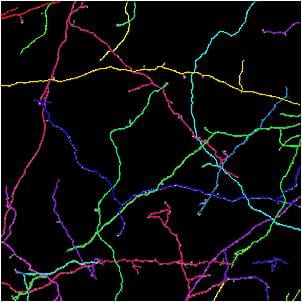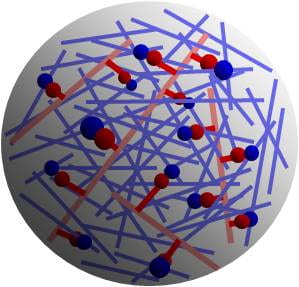Research
Algorithm and software development for automated analyses of neural circuits
A large part of the research effort of the Neurogeometry group is dedicated to the development of algorithms and software tools for automated analyses of 3D light microscopy images of neurons. Because a large fraction of synaptic connections in the mammalian brain is mediated by long-range projections of excitatory neuron axons, unbiased connectivity measurements require high-throughput imaging and reconstruction of neural circuits on the scale of the entire brain. Likewise, structural changes in connectivity often must be monitored over long periods, which necessitates automation. We utilize the latest image processing and machine learning methods to enable such experiments. Our software includes NCTracer Web for automated and manual tracing of neurites, BoutonAnalyzer for detection and tracking of structural changes in boutons in time-lapse stacks of images, and Registrar for spatial and temporal registration of image stacks.


Learning and memory in biologically constrained artificial neural networks
Changes in synaptic connectivity in the adult brain are largely limited to potential synaptic sites, i.e. locations in the overlap region of axonal and dendritic arbors in which the creation of boutons on axons and spines on dendrites can lead to the formation of synapses. Because the larger-scale morphologies of neurons remain unchanged in this process, we pursue the hypothesis that basic features of the brain connectome result from writing memories into the static structural mesh created by neuronal arbors. This hypothesis was tested in a series of studies in which methods of statistical physics were used to examine the properties of biologically constrained recurrent neural networks capable of learning predefined sequences of network states. The central finding of these studies is that when individual neurons are robustly loaded with a near-maximum amount of memories they can support, the network develops many properties that are consistent with the experimental observations.
Inferring the principles of synaptic connectivity through the analyses of neuron morphology
We analyze 3D morphological reconstructions of axonal and dendritic arbors to infer the rules that govern synaptic connectivity. Among many findings, this research revealed that (i) cortical circuits have a large potential for structural plasticity associated with the formation and elimination of dendritic spines (ii) the axons of inhibitory neurons show specificity in their layout relative to the postsynaptic targets, while the excitatory neuron axons exhibit no such specificity, (iii) the strengths of structural and functional projections in the cortex are correlated, (iv) the connectivity in the cortical column is highly non-local with the majority of synapses originating from neurons outside the column, and (v) synapses between neurons form cooperatively, such that connections mediated by greater than a threshold number of synapses are stabilized, while lesser connections are eliminated.
